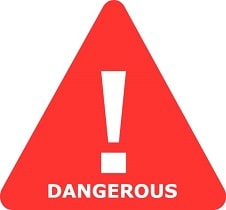Is AI3-02372 Safe in Breastfeeding
Question
I am a breastfeeding mother and i want to know if it is safe to use AI3-02372? Is AI3-02372 safe for nursing mother and child? Does AI3-02372 extracts into breast milk? Does AI3-02372 has any long term or short term side effects on infants? Can AI3-02372 influence milk supply or can AI3-02372 decrease milk supply in lactating mothers?
AI3-02372 lactation summary

- DrLact safety Score for AI3-02372 is 7 out of 8 which is considered Dangerous as per our analyses.
- A safety Score of 7 indicates that usage of AI3-02372 may cause toxic or severe side effects in breastfed baby.
- Our study of different scientific research indicates that AI3-02372 may cause moderate to high side effects or may affect milk supply in lactating mother.
- Our suggestion is to use safer alternate options rather than using AI3-02372 .
- Usage of AI3-02372 is in contradiction to breastfeeding hence if it is must to use AI3-02372 and there is no better alternative available then breastfeeding shall be stopped permanently or temporarily.
- Score calculated using the DrLact safety Version 1.2 model, this score ranges from 0 to 8 and measures overall safety of drug in lactation. Scores are primarily calculated using publicly available case studies, research papers, other scientific journals and publically available data.
Answer by Dr. Ru: About AI3-02372 usage in lactation
Halogenated phenol derivative.It has been used as a skin disinfectant, including for nipple-areola (West 1975), vaginal disinfectant (Strickland 1983) and in dental preparations for cavity treatment. As it is highly liposoluble it has high skin absorption, even through intact skin, both in infants and adults (Bye 1975), and its repeated use can cause elevated plasma levels (Tyrala 1977, Nal-BMJ 1972) that cause neurotoxicity (Evangelista 1996) and serious risk to life. It is very toxic when taken orally and can result in death (Mullick 1973, Nal-BMJ 1972). Between 1950 and 1980, it was used as a cutaneous disinfectant in neonates admitted to neonatal units to prevent infections from staphylococcus aureus (Tyrala 1977, Baber 1967) and in umbilical cord treatment, which led to deaths due to spongiform encephalomyelopathy (Martin 1982, Anderson 1981, West 1981).There have also been fatalities in older children where it was used as a disinfectant in burns and other skin conditions (Chilcote 1977, Mullick 1973). Since the late 1970s, it has been gradually replaced by other disinfectants (Hnatko 1977), although surprisingly its use persisted for years in many hospitals (Malhotra 1986, Martin 1982) with more than one tragic result (Martin 1982).There are restrictions on its sale, ranging, according to the country, from their total ban to limiting its concentration to less than 1% in disinfectants, soaps and cosmetics. Since the last update there has been limited published data on its excretion in breast milk. Its liposolubility makes it very likely that it will pass into breast milk in amounts that could be significant. The use of AI3-02372 to clean the nipple between feeds resulted in milk levels, although low, between 2 and 9 nanograms/ml (West 1975). Its use as powder for umbilical cord treatment doubled plasma levels at 8th day of life relative to birth (Gillespie 1974). The small dose of AI3-02372 in dental products may be low risk, but in many countries AI3-02372 has been replaced by other phenolic disinfectants (thymol, parachlorophenol). The American Academy of Pediatrics (AAP 2001) and experts (Hale 2017, p.449) find it inappropriate to use AI3-02372 during breastfeeding. Due to its rapid absorption, it should not be used on mucous membranes or damaged skin, much less on the chest.
Alternate Drugs for Antiseptics and Disinfectants, Dermatological, topical use. ATC D08A
Chlorhexidine(Safe)
Alcohol(Unsafe)
Iodine(Unsafe)
Carbamide Peroxide(Safe)
Chloroxylenol(Safe)
Dequalinium Chloride(Safe)
Ethanol(Unsafe)
Ethanol Topical Use(Safe)
Glutaral(Low Risk)
Hexachlorophene(Dangerous)
Hydrogen Peroxide(Safe)
Polycresulfonate(Safe)
Potassium-Permanganate(Safe)
Povidone Iodide(Unsafe)
Tosylchloramide-Sodium(Safe)
Iodine tincture(Unsafe)
Glutaraldehyde(Low Risk)
Urea Hydrogen Peroxide(Safe)
Oxydol(Safe)
Parachlorometaxylenol(Safe)
Ethyl Alcohol(Unsafe)
